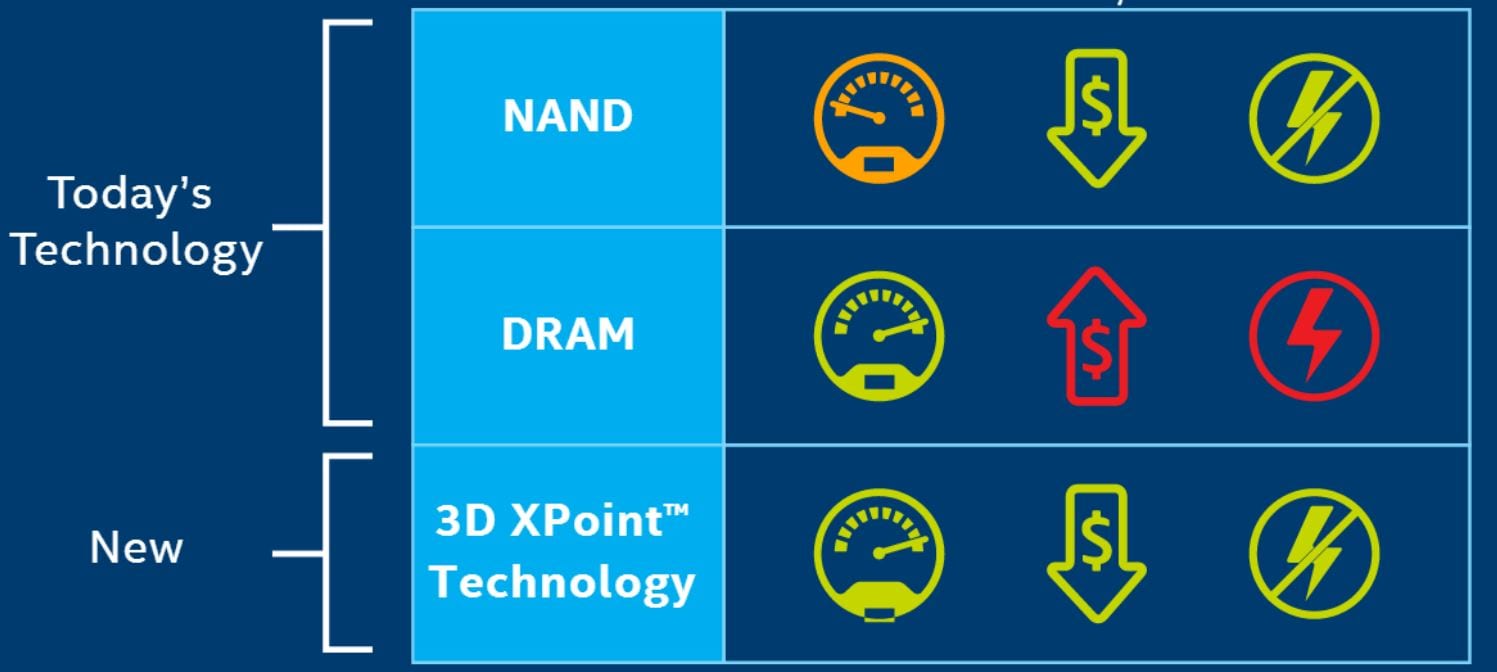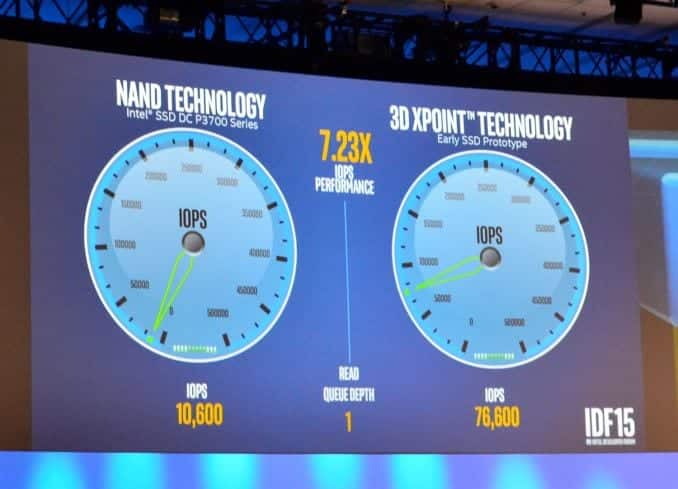Intel demonstrates Optane, the world’s first SSD that works on cutting-edge 3D XPoint memory3D XPoint, a powerful alternative to DRAM and NAND flash
Intel has not revealed the specifications or details of Optane as it has been developed in top secrecy to protect it from competitors. Intel stated that it was seven times higher IOPS (input output operations per second) compared to Intel’s own professional NAND flash drives. The Optane solid-state drive is based on the 3D XPoint non-volatile memory that gets its own advanced memory controller, interface hardware and software IP. Right now there isn’t any sort of physical interface that can fully use the new 3D XPoint at its greatest potential since modern PCI Express 3.0 and modern PCIe NVMe will only offer limited improvements over present-day NAND flash.
3D XPoint, a powerful alternative to DRAM and NAND flash
It seems the new type of memory has eight to ten times greater density than DRAM, and while not being as fast as DRAM memories, it is a thousand times faster than modern-day storage standard. An XPoint memory chip will store 128Gbits (16GB), which means a 3D XPoint SSD will have the same capacity range as a current SSD using 128Gbit NAND chips that are 1 bit/cell, SLC, or single level cell NAND.
Intel stated that it is working with its partner, Micron and hopes to bring the new high-performance SSDs will hit the market at the start of 2016. It also said that the new 3D XPoint memory technology will also be used on a new line of Intel DIMM modules for Intel’s next-gen data platforms, most likely the mysterious Purley server system.

